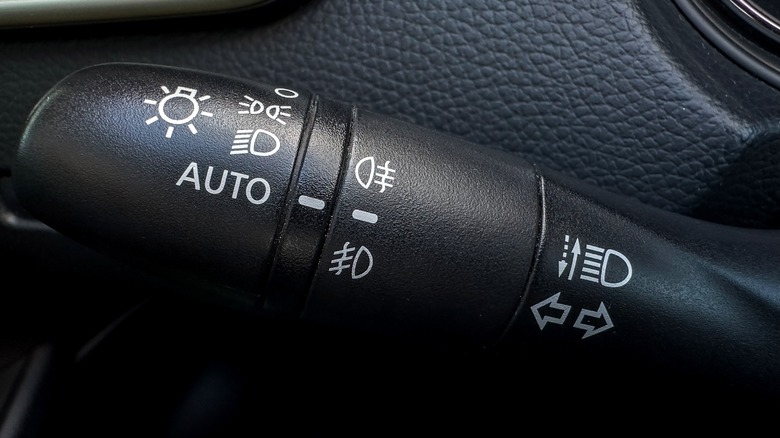
New cars incorporate tech you never realized you needed, like 360-degree cameras, blind spot warning systems, and adaptive cruise control. As new innovations are introduced, other features are slowly phased out of new cars, including physical gear selectors, spare tires, and physical buttons. Fog lights are another feature offered in fewer new cars.
Mounted low on the vehicle, fog lights produce a sharp beam of light directed towards the road, enabling the driver to see lane markers and other features
under the fog, whereas headlights are positioned higher on the vehicle. The National Weather Service (NWS) recommends using fog lights and low-beam headlights in tandem during poor visibility conditions, as high-beams can cause glare during fog, reducing visibility and making it challenging to see the road ahead.
Providing a unique purpose compared to headlights, fog lights can be crucial to vehicle safety. However, this once common feature has been replaced in recent years as innovations have made headlights more effective.
Read more: These Mods May Look Good, But They'll Just Make Your Car Slower
Why Have Fog Lights Disappeared?

Fog lights were introduced to mitigate the visibility deficit of halogen headlights, as halogen lights were unable to provide the concentrated beam of light required for visibility in fog. However, some automakers believe that advancements in headlight technology make the inclusion of fog lights redundant. Hyundai and Genesis credit Multi-Face Reflector (MFR) headlamps and light-emitting diode (LED) lamps for diminishing the need for fog lights. Genesis claims that vehicles equipped with LED and MFR headlights, especially those using clear covers, reflector plates, and refractive lenses, provide notably improved visibility.
LED-equipped headlights produce a shorter wavelength and almost white light, which is said to provide great visibility, even in fog, removing the need for fog lamps. Although fog lamps aren't particularly high-energy use items, another advantage of LED lights is that they are said to be 20 times more efficient than halogen lamps. Genesis claims that the weight loss from the elimination of fog lamps can improve vehicle performance and give designers more aesthetic options. Meanwhile, repurposing the space fog lamps occupied for functional air curtains has enabled engineers to improve the vehicle's aerodynamics.
Another contributing factor to the elimination of fog lights is that they aren't required in the U.S. The National Highway Traffic Safety Administration, which sets the Federal Motor Vehicle Safety Standards, requires components like seat belts, airbags, tire pressure monitoring systems, and backup cameras, yet does not mandate fog lamps. Meanwhile, the U.K. requires a rear fog light at a minimum.
Can You Still Buy A Car With Fog Lights?

Regardless of new lighting technology, if you still want fog lights, you have some options. First, not all automakers have eliminated fog lights. For instance, they're standard on the discontinued Infiniti QX55 luxury crossover, while the Polestar 2 EV offers front fog lamps, cornering lights, and rear fog lights, which makes the vehicle more visible to others on the road during conditions such as snow, fog, or smoke.
Your second option is to add fog lamps to a vehicle that did not come with them from the factory. Fog light kits are available for purchase, and 1A Auto provides a detailed video on how to install them as part of a DIY. While a DIY will save you labor costs, paying extra for professional installation might be worth the peace of mind.
New technology, like LED lighting, and the fact that fog lights have never been federally mandated safety equipment, have caused dedicated fog lights to become less common. Fortunately, there are still cars that offer fog lights, and for the ones that do not, there are fog light kits available as aftermarket accessories.
Want more like this? Join the Jalopnik newsletter to get the latest auto news sent straight to your inbox...
Read the original article on Jalopnik.












